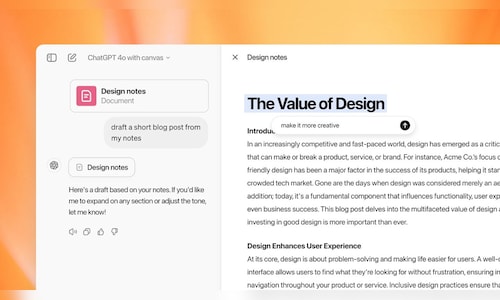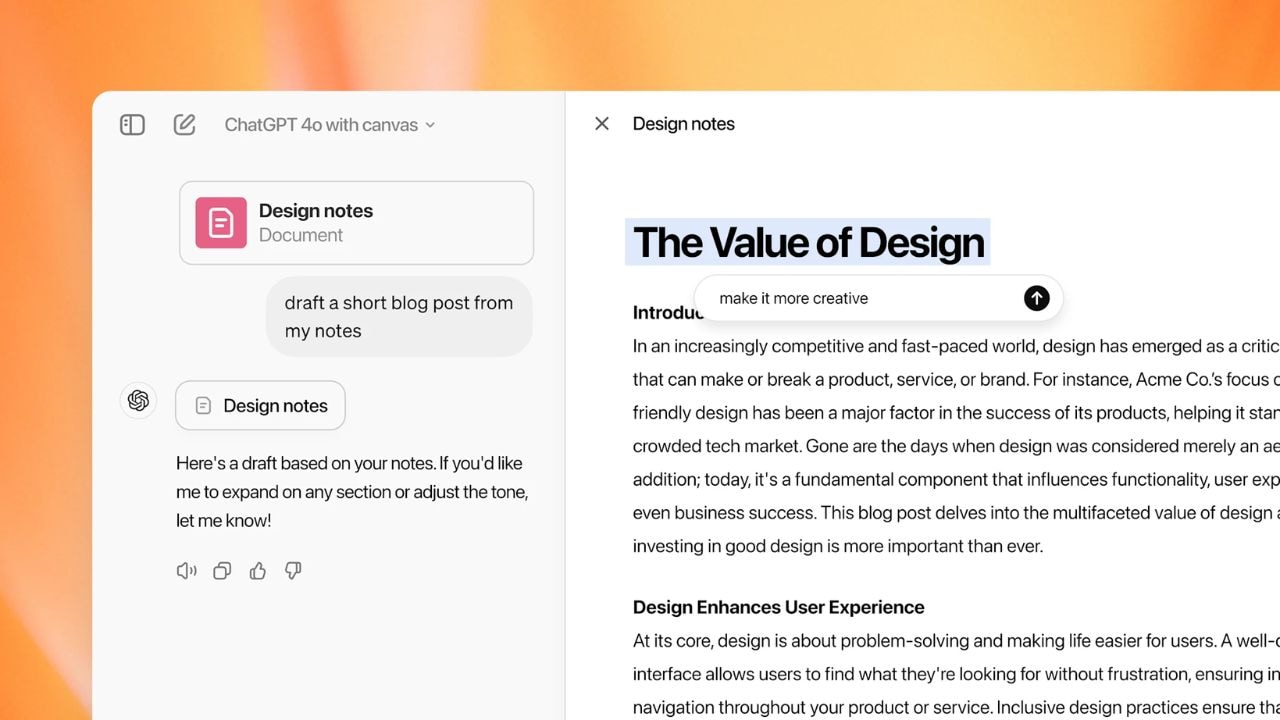

Canvas is a separate workspace where users can collaborate with ChatGPT on more complex projects that go beyond traditional chat interactions. This feature allows users to draft, edit, and refine ideas alongside ChatGPT in real-time. By offering targeted feedback and enabling in-line editing, Canvas aims to act as a digital collaborator for writers and developers alike.
For writers, Canvas offers shortcuts to adjust text length, improve grammar, and even modify the reading level. Users can also request suggestions, polish their drafts, or add emojis for emphasis.
Meanwhile, developers can leverage tools like inline code reviews, debugging logs, and code translations into multiple programming languages, including Python, JavaScript, and C++.
Users remain in control of their projects on Canvas. They can highlight specific sections for focused feedback, directly edit text or code, and even revert to earlier versions.
ChatGPT will even open Canvas automatically when it senses you’re working on something that could use an extra hand—or you can manually activate it by typing “use canvas.”
OpenAI built Canvas on GPT-4o, tweaking the model to make it smarter about when and how to offer help. The company used a mix of synthetic data and human reviews to train the model, so it knows when to make small edits, suggest big rewrites, or just leave things as they are.
Canvas isn’t just about doing more with ChatGPT—it’s about making the whole process feel more collaborative and human.
Also Read: OpenAI unveils AI video generator Sora to ChatGPT Plus users



